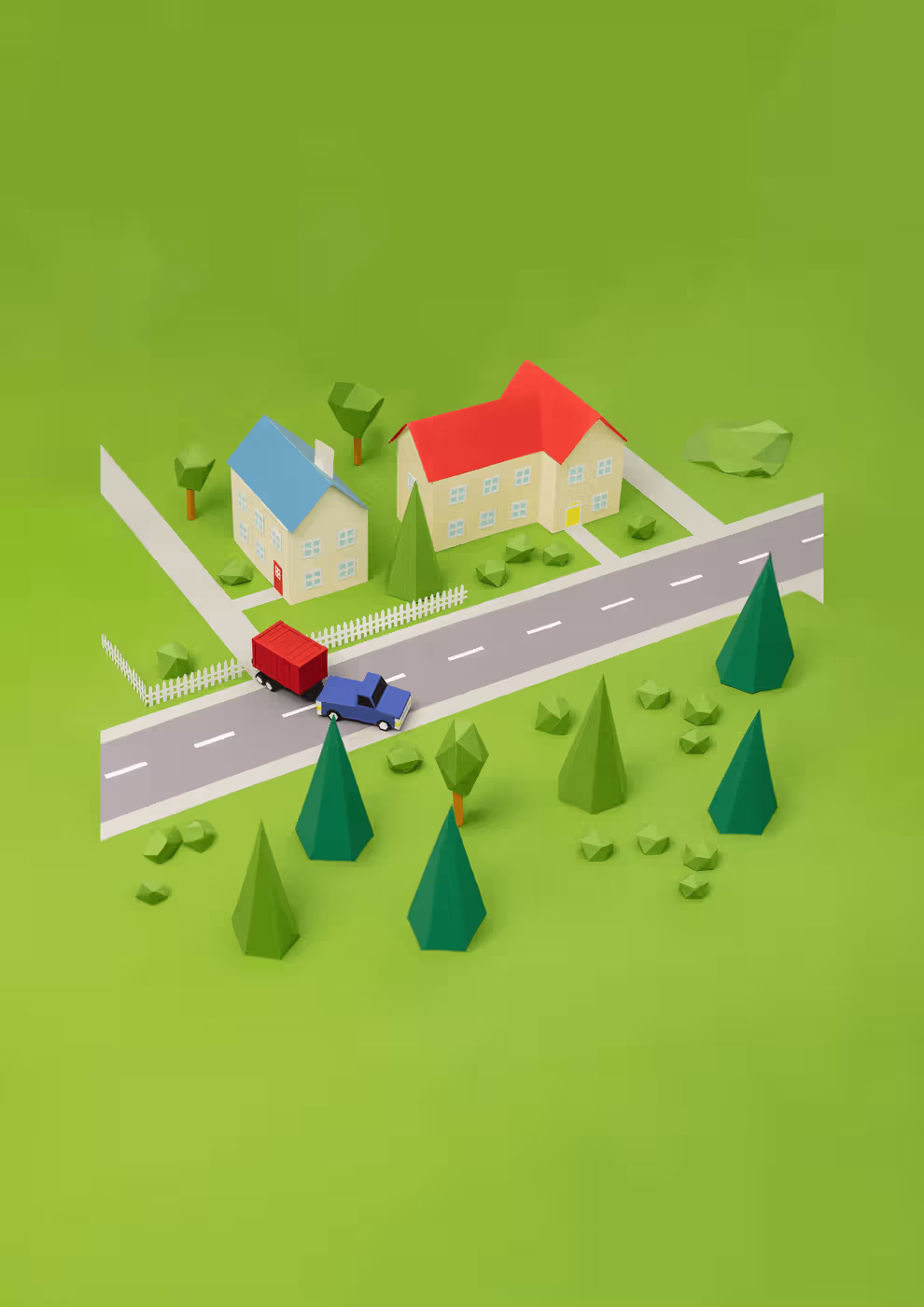SPRING SALE: Receive $100 Off Per Container
What To Expect With Your Container Delivery From Eveon
Follow these simple guidelines to ensure a hassle-free delivery experience. We rely on local and experienced and insured truckers who have completed thousands of container deliveries, so you can trust that your delivery is in good hands.
With a focus on convenience and efficiency, Eveon Containers makes it easy to get your 20ft or 40ft container delivered wherever you need it, hassle-free within a few days of delivery.
Be sure to watch the video below and download our guide to prepare for your tiltbed delivery. Are you looking for info on flatbed deliveries? This article provides comprehensive information about flatbed and tiltbed trucking.
Follow These Simple Steps to Ensure a Safe & Seamless Delivery from Eveon...

Frequently asked questions about the delivery
- Ensure sufficient space: Make sure that there is enough space on your property for the delivery truck to access. Measure the available area and consider factors such as the container size and the maneuvering space required by the truck.
- Clear obstructions: Clear your driveway, or property of any obstructions that may block the truck's access. Remove any parked vehicles, bicycles, or other items that might obstruct the path.
- Check entrance width: Assess the width of the entrance, considering any fences, trees, or other structures that may limit the truck's passage. Ensure that the entrance is at least 12ft wide to for the truck to access. If you are unsure of the access, share photos or videos of the delivery location with us or the driver before delivery.
If your location is determined to be unsuitable for delivery based on the guidelines provided in our delivery guide, please reach out to us as soon as possible. Our transport partner will assess the safety of the delivery location for container. If it is found unsafe, the container will be delivered to the closest suitable location. However, if that is not possible or if you decide to decline the delivery, the container will be returned to the depot.
Please note: Backhaul charges amounting to 1 additional trip will apply in all locations.
We need to ensure that the delivery truck has space of at least 12ft wide to maneuver, so it can easily access your location without any obstacles in the way.
Yes, we are able to deliver during rain. However, it is important to assess your specific location and the condition of the surface where the container will be placed. Rainy weather can affect the drivability and firmness of the ground, which may impact the delivery process.
For example, a gravel road that is typically easy to drive on can become difficult or even undriveable for a truck after a day of heavy rain. Similarly, muddy areas, wet grass, or accumulated snow can cause the truck to sink or slip, creating safety concerns. In such cases, the driver may refuse or need to delay the onsite delivery.
In most cases and cities we can deliver during the winter. Unfortunately, we are unable to deliver in the event of winter storm, particularly when it has been snowing. We will contact you if this situation happens.
If you require a delivery during winter and there is snow, it is important to ensure that the road and the designated location for the container are free of snow as much as possible. This helps ensure safe access for the delivery truck and minimizes potential hazards.
Additionally, during winter, icy conditions are common. Driving on ice can be extremely dangerous, so we recommend de-icing your delivery site using salt or sand. Regularly salting and sanding the area around your storage container is also advisable if you frequently access it throughout the winter, as it helps maintain a safe environment.
While we strive to provide timely deliveries, it's essential to acknowledge the challenges posed by winter weather conditions for a truck driver. Prioritizing safety and taking appropriate measures to clear snow and de-ice the delivery site contribute to a smoother and safer delivery process during winter.
Acceptable: Dry compacted gravel, dry compacted dirt, asphalt, concrete
Not acceptable: Loose dirt, wet gravel & dirt, mud, sand, soft grass, snow & ice, steep inclines or declines, sloping surfaces, drains & ditches, trenches
Delivery on grass or sand is generally not the most stable option, and our transport partners may consider them unsuitable surfaces. Specifically, delivery on sand is not possible, while we prefer to avoid delivering directly onto grass. However, if you still prefer to have the container placed on grass, please share a photo of the location and ensure that the surface is dry, packed and firm.
For the delivery process, a hard flat surface is necessary on the road, entrance, and the designated spot for the container. This is because both the delivery trucks and the container itself are heavy, requiring a firm surface to safely maneuver and position them. In the case of placing the container on grass, it is advisable to use landscape timbers or wooden planks to prevent the container from sinking. Additionally, the ground should be dry, packed and firm to avoid any issues with the truck sinking into soft ground during unloading.
While grass is generally easy to repair once you're finished with the container, it is important to note that if the area is wet, access may be restricted once the delivery is complete. Therefore, it is crucial to consider the condition of the ground and ensure it meets the necessary requirements for a successful and smooth delivery process.
Yes, absolutely! If you have any doubts about the suitability of your location for delivery, please feel free to email us (info.usa@eveoncontainers.com) pictures and videos of your location. We can then assess the site and confirm if delivery is possible.
Shipping containers need to be kept level; otherwise, you may encounter issues with the doors, such as stiffness or becoming unworkable. These containers are specifically designed to tolerate a certain level of flexing while at sea on a shipping vessel. However, when you place a shipping container on uneven ground, it may flex to one side, causing difficulties in properly closing the doors.
To ensure smooth operation of the doors, it is recommended to use railroad ties, concrete slabs, or clear any debris from the surroundings. Despite their size and strength, containers are sensitive to shifting when placed on uneven ground.
While our transport partner can assist during the placement of the container, it is your responsibility to have a leveled ground prepared beforehand. Please make the necessary arrangements to have the ground leveled prior to delivery.
No, we are unable to drop the containers on raised foundation pillars. However, we can place the containers on railroad ties.
Unfortunately not. We use tilt beds to delivery your container. Therefore, we are unable to place the container over a fence or any other object.
- Determine which way the doors of the container will face once it is delivered. This will help you plan the placement of the container at your location prior to your container arrival.
- Ensure that you have enough space to fully open the container doors when placed. Take into account the width and height of the doors. It is recommended to walk the area and understand the footprint of a 20-40ft container on your property.
Flatbed delivery involves transporting your container on a flatbed trailer, which differs from the tilt bed method where the container slides off the back of the truck onto the ground. With flatbed delivery, you're responsible for offloading the container using appropriate equipment like a forklift or crane.
Flatbed delivery requires the customer to have the necessary equipment (e.g., a forklift or crane) to offload the container themselves, while tilt bed delivery includes placement of the container by the truck driver.
The delivery requirements for flatbed delivery are the same as for tilt bed delivery. We need to ensure that the delivery truck has at least 12 feet of width to maneuver, allowing easy access to your location without any obstacles in the way.
Flatbed delivery is cheaper than tilt bed delivery because it uses less expensive and more accessible trailers and equipment. Additionally, the customer handles the offloading.
Download the delivery checklist!
Prepare for a hassle-free container delivery with our 8 simple checks!
Download

